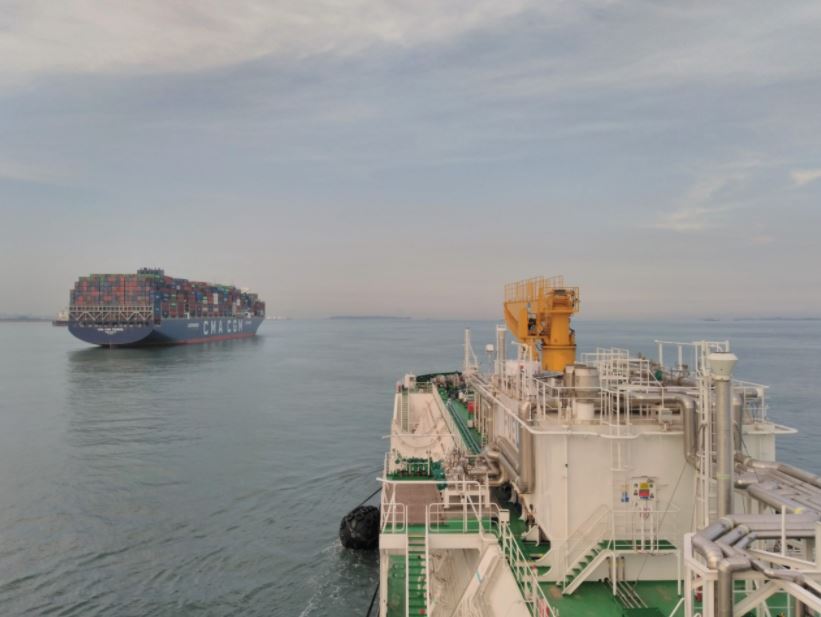Energy giant Shell will supply liquefied natural gas to CMA CGM’s LNG-powered containerships in Singapore under a new deal revealed on Tuesday.
Under the multi-year bunkering deal, Shell will deliver LNG to CMA CGM’s 13,000-teu vessels in the Port of Singapore, starting from the second half of 2023, according to a statement.
Singapore’s FueLNG, a joint venture consisting of Keppel Offshore & Marine and Shell, will conduct these simultaneous LNG bunkering operations.
The JV already provides LNG via the 7,500-cbm vessel, FueLNG Bellina, to CMA CGM’s vessels. This also includes Asia’s first ship-to-containership LNG bunkering conducted last year.
Besides this vessel, Shell said an 18,000-cbm LNG bunker vessel that will come into service in 2023 will also deliver LNG to CMA CGM’s containerships, further enhancing the reliability of its LNG bunkering operations.
Decarbonization
In addition to the bunkering deal, Shell and CMA CGM signed a memorandum of understanding to accelerate decarbonizing the marine sector.
The memorandum includes the advancement of low-carbon marine fuels, such as liquid biofuels, bio/e-methane (to LNG), bio/e-methanol, for new and existing vessels.
Also, the partners will work on the delivery of innovative technical solutions, which include LNG and hydrogen blending, methane slip abatement technologies and fuel cell technology development.
Shell also said that the memorandum includes exploring voluntary and mandated trading mechanisms for carbon credits and joint advocacy for net zero-emissions policies.
As Shell and CMA CGM are long standing partners, both companies plan to extend their partnership to the road and aviation sectors in the future, the statement said.
“CMA CGM continues to see the potential in LNG as a marine fuel, so it is a hugely positive step to be extending our supply commitments in this area,” Tahir Faruqui, head of Downstream LNG at Shell, said.
“LNG is a fuel in transition and offers a credible pathway to liquefied biomethane and the hydrogen-based fuel liquefied e-methane; both having the potential of being net zero,” he said.

